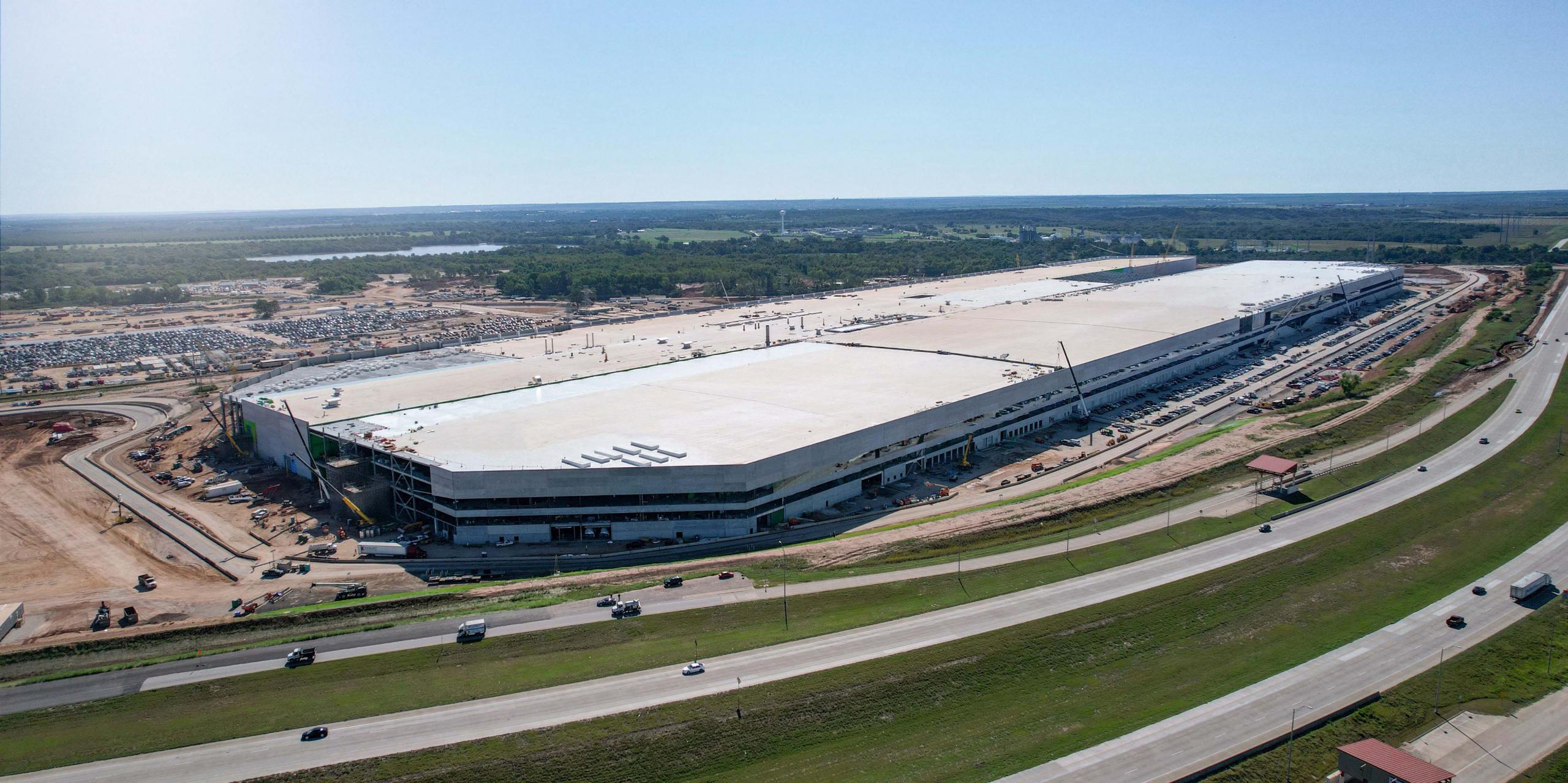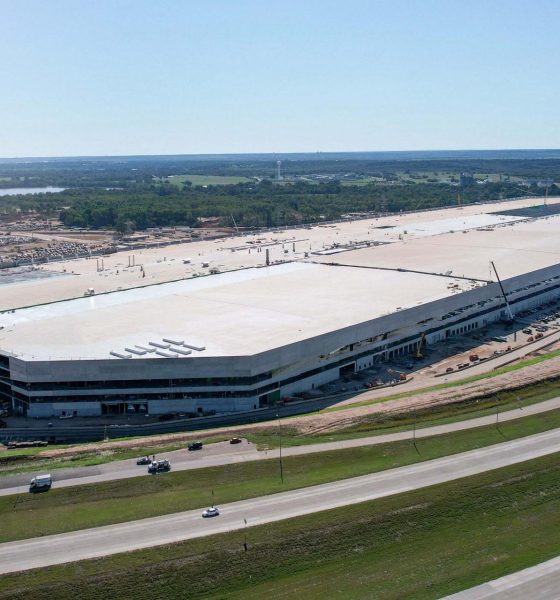Nine profitable quarters and counting. With its blockbuster Q3 2021 results, Tesla (NASDAQ:TSLA) has all but proven that is a sustainable business. An earnings per share (EPS) of $1.86 and a monster 30.5% automotive gross margin just proves that. Tesla was bold in its Q3 2021 Update Letter, and for good reason. In the third quarter, Tesla achieved its best-ever net income, operating profit, and gross profit — all while its ASP decreased by 6% year-over-year.
As discussed in the company’s Q3 2021 Update Letter, Tesla achieved some milestones in the third quarter. The Fremont Factory has produced more than 430,000 vehicles on its own in the last four quarters, and it’s still being improved. Giga Shanghai has settled into its role as the company’s export hub, Giga Texas is in the pre-production stage of the Model Y, and Giga Berlin is ready to hit the ground running. Tesla Energy also continues to ramp.
The following are live updates from Tesla’s Q3 2021 earnings call. I will be updating this article in real-time, so please keep refreshing the page to view the latest updates on this story. The first entry starts at the bottom of the page.
15:33 PT: And that wraps up Tesla’s first Elon-less earnings call! Thanks so much for staying with us for today’s coverage. Until the next time then!
15:31 PT: Jonathan Dorsheimer from Cannacord. Kirkhorn noted that Tesla is aiming to produce its first vehicles in both Berlin and Texas by the end of the year. With this in mind, there is quite an execution journey ahead of the company. There should be no expectation that there will be cars delivered from Giga Berlin and Giga Texas this year, however, partly due to regulatory reasons. As for how this impacts margins, it’s difficult to predict. It’s tricky to really tell how ramping production will effect margins.
15:28 PT: Trip Chowdry asks about the differences about Giga Berlin and Giga Texas. He also asks about the supply for the Cybertruck’s exoskeleton.
Tesla notes that the Cybertruck is designed for durability. There are some early decisions that were made, but there’s progress being made. Suppliers are being tapped to ensure that the Cybertruck could be ramped fairly well. That being said, Tesla has already begun the casting of the Cybertruck’s initial exoskeleton.
As for the differences between Giga Berlin and Giga Texas, their differences are more unique to their respective regional locations.
15:24 PT: Brian Johnson from Barclays takes the floor. He thanks Tesla for not making the earnings call into a “one man show.” He asks about the progress on FSD and its timetable for Level 4 capability.
Kirkhorn noted that it’s difficult to be specific on FSD’s timelines. Tesla can only state that it’s working very hard on this, and the company has been very transparent on its development. “Tesla Autopilot is working extremely hard. “You can feel the progress,” Kirkhorn said. The team is moving quickly too, so improvements should be substantial.
Lars Moravy adds that Tesla always works with regulatory bodies, including the NHTSA. He noted that Tesla is providing the information as incidents occur, and it is one of the only companies that responded to these probes.

15:20 PT: Collin Rusch from Oppenheimer asks about battery anode materials. With regards to this inquiry, Tesla notes that the anode materials are not at the same place in terms of commodities. The company also reiterated the notion that its primary focus on the anode side is to reduce costs, at least without impeding the long-term recyclability.
As for the company’s vehicle pricing strategies, the CFO noted that there seems to be a profound awakening among consumers about electric vehicles. “There has been a profound awakening of desirability for EVs,” Kirkhorn said. It’s so notable that Tesla has practically been caught off guard. The company has installed capacity to produce products like its vehicles more, but the grind is real.
Addressing Tesla’s price volatility, the CFO noted that all car companies do this. Tesla just happens to be pretty transparent about it. These fluctuations are due to a variety of factors.
15:15 PT: Colin Langan from Wells Fargo takes the floor. He asks about any possible impact from the battery material price hikes. Kirkhorn noted that Tesla has indeed seen the impact of this, though the company is focused on nickel. The CFO notes that some of these costs have been passed on to the company. It’s also possible for Tesla to see some cost headwinds in the coming year, at least considering the volatility of the market right now. Kirkhorn noted that Tesla must lower the price of its products, and optimize its operations even further. “We have no choice but to continue on that path,” the CFO said.
15:11 PT: Joseph Spak from RBC takes the floor. He asks if Tesla has a aspirational gross margin target when in the long term? Kirkhorn notes that Tesla is implementing lots of efficiencies and production ramps in multiple sites. This would likely put downward pressure on the company’s gross margins in the near term. Cost increases on the commodity side are also present. “There are a number of unknown unknowns that we need to work through. We are seeing costs increase on the commodity side,” the CFO said.
Kirkhorn also noted that Tesla’s operating expenses are decreasing, and the company hopes to improve this in the next four to five quarters. Tesla, at least for now, is focused on lowering overhead expenses and operating expenses.
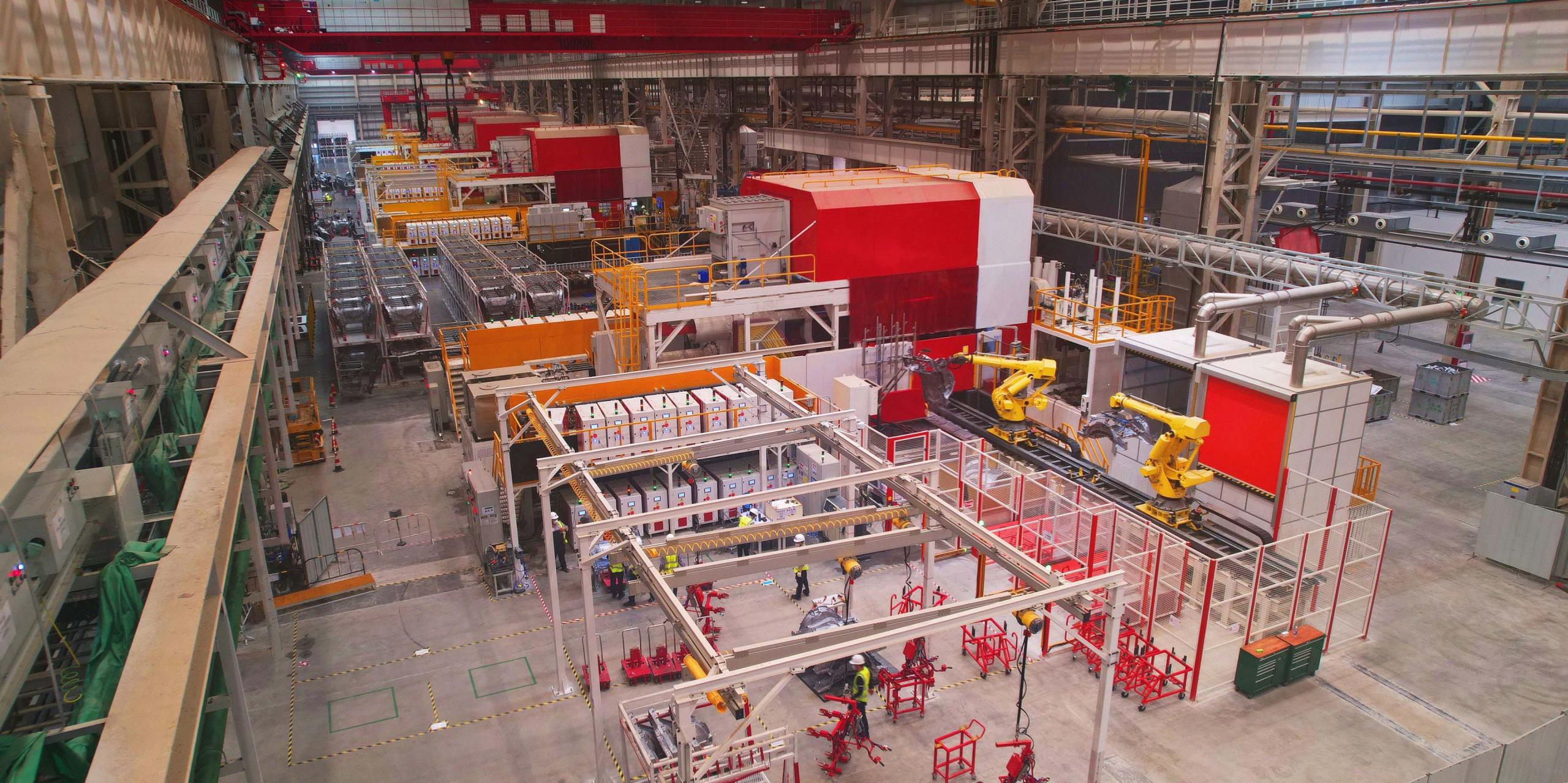
15:07 PT: Looks like Tesla’s Safety Score system is working so far. There are about 150,000 cars currently using the Safety Score system, and the company has so far noted that the probability of a collision for a customer using the safety score is about 30% lower. That’s not bad at all. “We’re off to a good start here,” Kirkhorn said.
15:05 PT: And Pierre Ferragu is here! He asks about Tesla Insurance, especially since the company has launched the service in Texas. He asks how Tesla will distribute this service. Will there be a marketing push? What’s the expansion plan? How fast will it happen?
Kirkhorn noted that he is extremely passionate about Tesla Insurance. Tesla is doing a lot if work in its efforts to enter the insurance market. “We want as many people as possible to afford our products,” the CFO said, noting that this is key to the company’s mission. As such, lowering insurance costs helps Tesla and its customers at the same time.
The CFO noted that traditional insurance typically utilizes limited data. And this causes some insurance rates for Teslas to be quite unfair. “Low-risk customers end up paying more, essentially subsidizing high-risk customers,” Kirkhorn said. Tesla Insurance aims to change this. There’s the Safety Score system, as well as the immense amount of data that Tesla can access from its vehicles. With this data, insurance pricing becomes a lot fairer.
14:59 PT: Looks like some tech issues there. Tesla is now checking in to solve the analysts’ technical issues. To pass the time, more investor questions are taken. An inquiry about transferring FSD to another vehicle was asked. Kirkhorn noted that a premium is paid by the company when it buys back vehicles that are equipped with FSD. “We’re already actually doing the sentiment of this question,” he said.
14:57 PT: Pierre Ferragu from New Street Research is up. His mic is not working, however. Joseph Spak of RBC is called on to take Pierre’s spot temporarily. But his mic is also not working. Strange.
14:56 PT: Final question from investors is about FSD and its pricing. Kirkhorn declined to comment on any pricing strategies in the near term. However, he did state that Tesla is learning what it can from FSD subscriptions today. The CFO also noted that Tesla has observed how owners become curious about the company’s software offerings when they purchase vehicles.
14:53 PT: As for Supercharger wait ties, a dedicated team is monitoring congestions. Average congestion has decreased over the past 18 months, and the company is focused on accelerating the expansion of the rapid charging network. Tesla plans to double its Superchargers in the near future, potentially tripling the network later on. The company is also focused on lowering Supercharging time, and rolling out strategies like encouraging owners to charge their vehicles in off-peak hours.
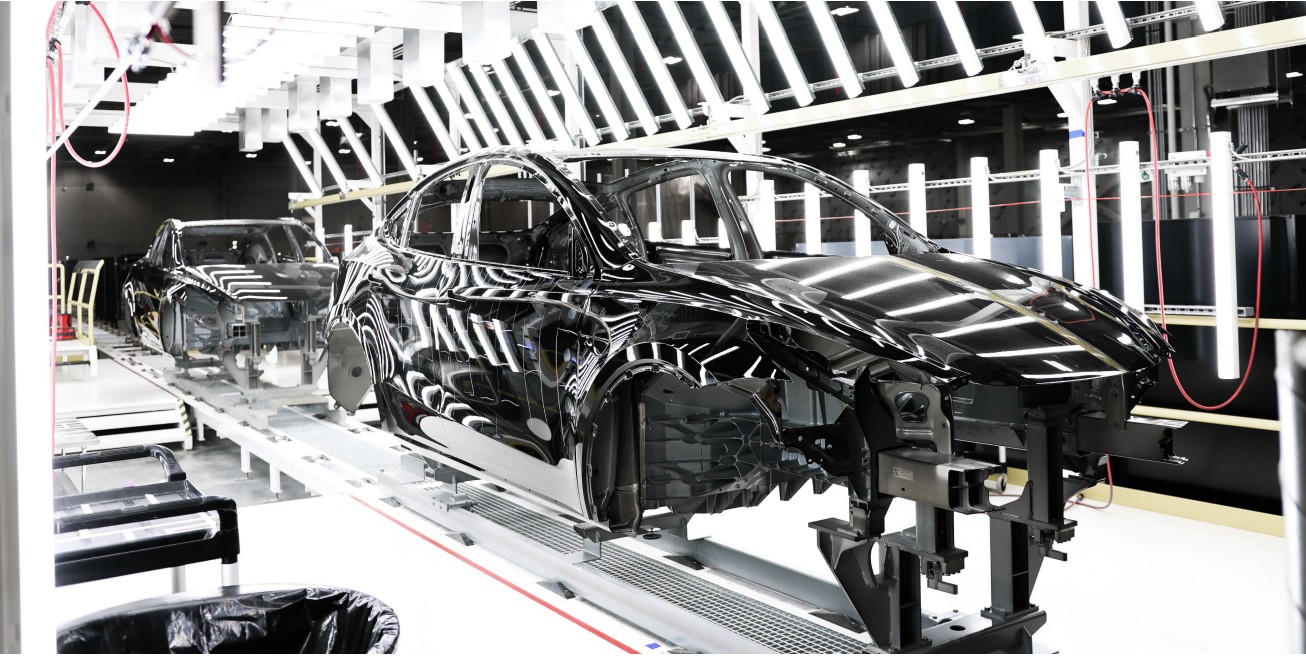
14:51 PT: As for Tesla service issues and Supercharger wait times, Kirkhorn noted that these issues are not unique to Tesla. Returning to normalcy amidst a pandemic is no joke, after all. More people are driving now, and thus, the need for service has also increased. Logistics-wise, sourcing parts has also been challenging.
Tesla is so far focused on just expanding its service network, with the company’s service footprint growing by 35%. Mobile service footprint has grown by 40%. The company is adding staffing as fast as it can as well.
14:48 PT: As for NHTSA officials that seem engaged with TSLAQ and the potential tightening of regulations, Baglino noted that Tesla is also working with safety regulators in the United States. He did state that Tesla keeps safety as a key pillar in its vehicle development, so all I could really do is be as transparent as possible. “We expect and embrace this scrutiny. We take safety as a top priority. We will continue to be transparent on how our software is developing,” Baglino said.
“Safety is extremely important for Tesla. It’s the right thing to do,” Kirkhorn noted, adding that Tesla’s “goal is to go beyond what the software can provide.”
14:44 PT: As for the capacity of the company’s production facilities by 2024, Kirkhorn noted that Tesla’s goal is to grow about 50% every year. Estimates can be extrapolated from this goal. That being said, Tesla has pushed the boundaries in facilities like the Fremont Factory, which is still being optimized. “”Our goal is to grow on an average pace of 50% per year,” he said.
The CFO also mentioned Giga Shanghai, which is currently producing the Model Y. Kirkhorn noted that Austin and Berlin are both launching with the Model Y, but they were built in areas where massive expansions are possible. He quotes an estimate of 10,000 vehicles per week as a possible target.
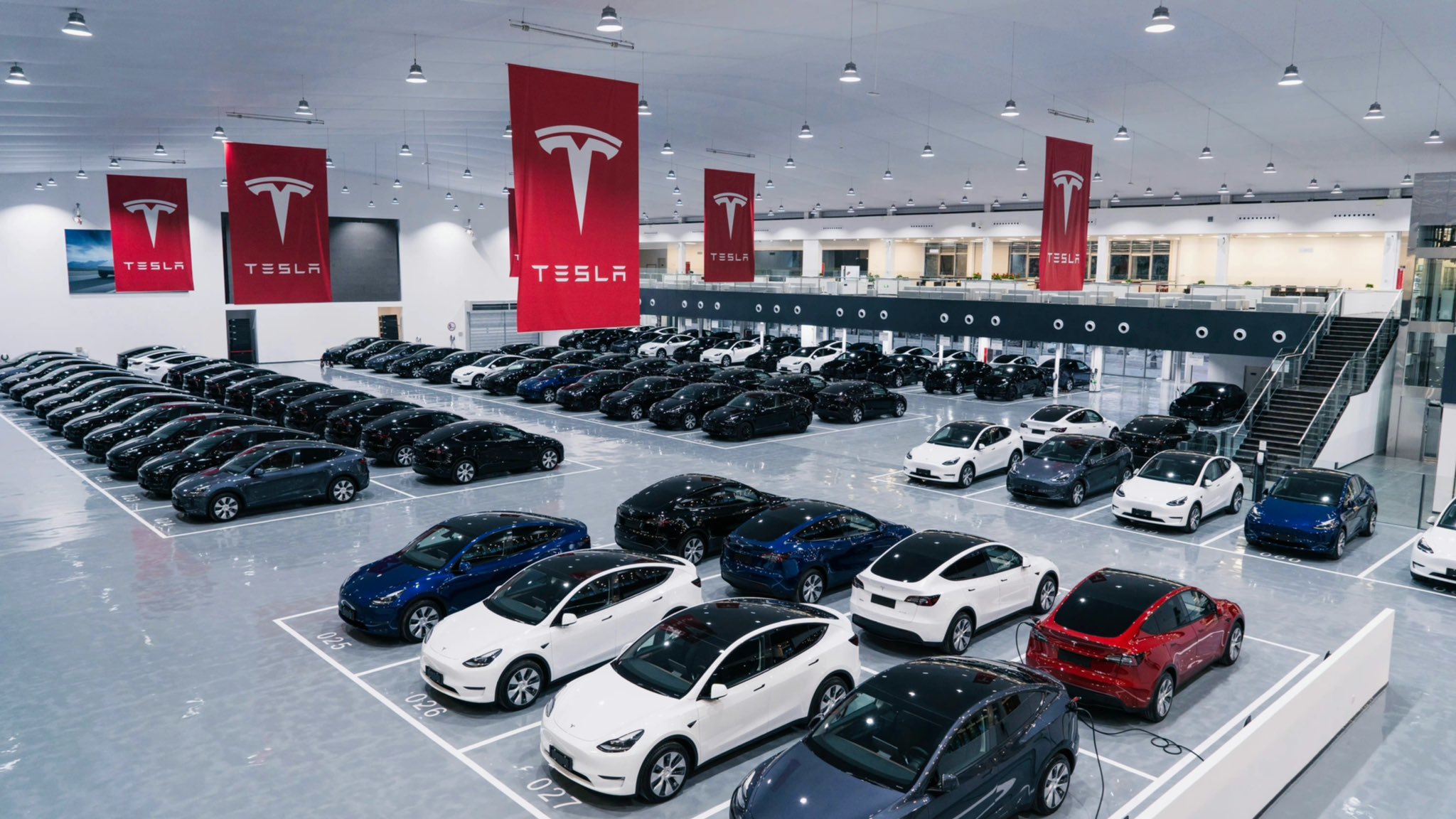
14:41 PT: Next question is about FSD Beta. The CTO noted that it’s not a matter of how much data can be collected, but how quickly the data can be processed. Baglino noted that this is really where Dojo comes in.
14:40 PT: Retail investor questions begin. First up is are the 4680 cells. According to Drew Baglino, the testing of 4680 cells has gone well. The development of the $25K car is also progressing fairly, with estimates still poised for a potential 2023 release. For now, however, Baglino noted that Tesla is heavily focused on vehicles like the Cybertruck and Model Y.
14:38 PT: Giga Berlin and Texas are poised to start ramping. Echoing Elon’s typical comments, Zach noted that the two sites are nearing the built of their first production cars. The CFO noted, however, that the hardest work lies in ramping Austin and Berlin production lines. “Overall, I’m very proud of what the team has accomplished,” Kirkhorn said.
14:35 PT: Zach takes the floor, noting that Tesla is making great progress as a company. He states that Tesla has achieved an annualized production run rate of 1 million cars per year. He does note that Model S and Model X would take some time to get back to their previous volumes, but he is optimistic.
He adds that while Tesla has practically doubled its deliveries, the company is still heavily challenged by the supply chain shortage. Factories are still not at full capacity. Tesla is just making things work by sheer hard work. Backlog is also increasing. As for energy storage, Powerwall and Megapack production is getting better. The production of 4680 cells is also making some headway. Model S is back to positive gross margins too.
14:32 PT: It begins! NO ELON on today’s call. Just Zach and Drew. Martin Viecha is doing the preliminaries.
14:30 PT: As we wait for the start of the Q3 2021 earnings call, a particularly interesting question that would be answered in a few minutes is if Tesla CEO Elon Musk would be on the call itself. He did say that he’d probably stop attending these things last quarter, but there’s a ton of stuff that Elon would probably like to address today. If the Q3 2021 Update Letter is any indication, Tesla achieved a ton this quarter, and much of those milestones deserve some in-depth insights.
14:25 PT: Good day, everyone, and welcome to another live blog of Tesla’s earnings call! Well, look what we have here. Nine profitable quarters. Something like this would have gotten a Tesla bull beaten up on Twitter just a couple years ago, but here we are. Now we wait.
Disclaimer: I am long TSLA.
Don’t hesitate to contact us with news tips. Just send a message to tips@teslarati.com to give us a heads up.

Investor's Corner
Tesla stock closes at all-time high on heels of Robotaxi progress
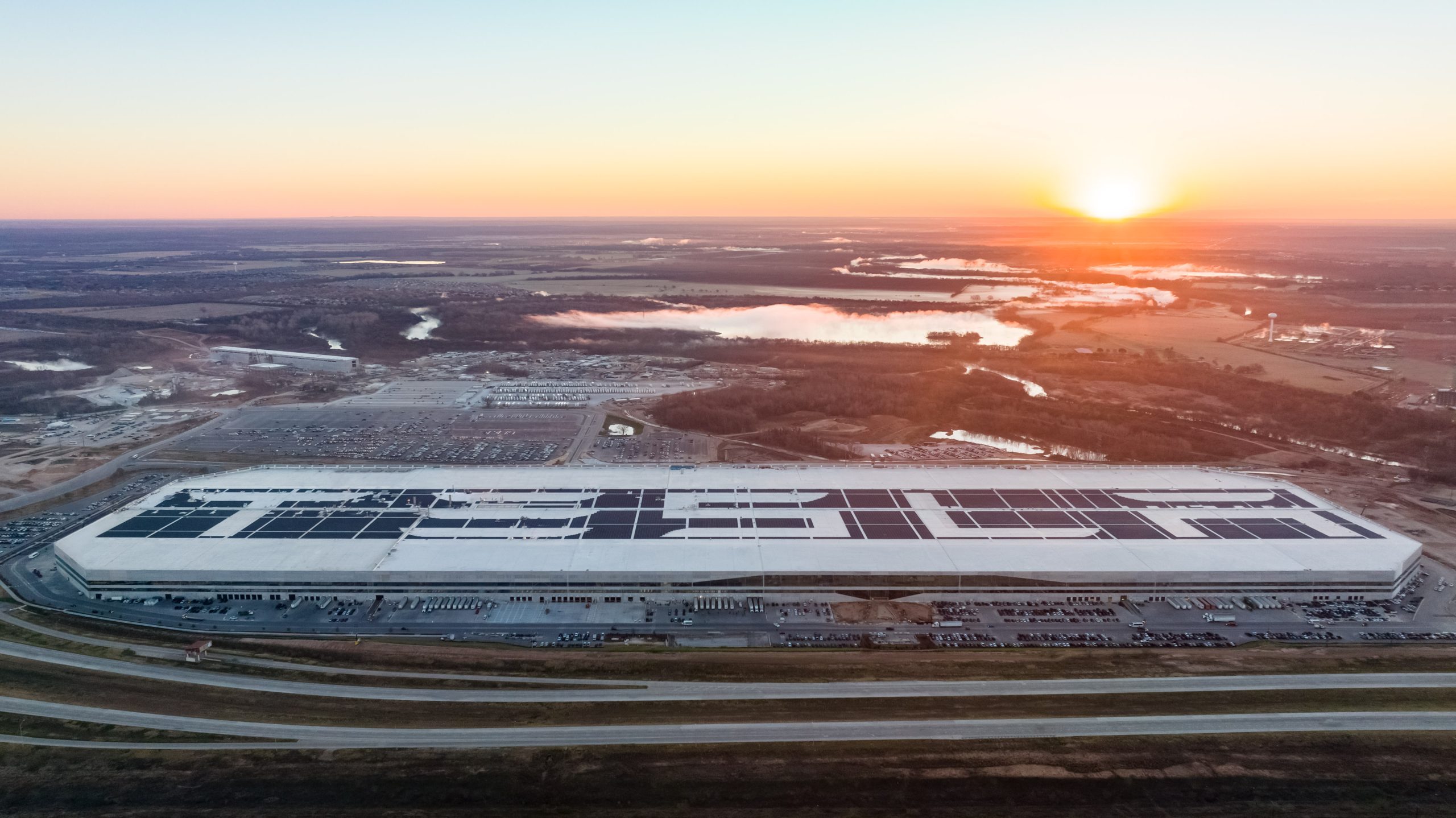
Tesla stock (NASDAQ: TSLA) closed at an all-time high on Tuesday, jumping over 3 percent during the day and finishing at $489.88.
The price beats the previous record close, which was $479.86.
Shares have had a crazy year, dipping more than 40 percent from the start of the year. The stock then started to recover once again around late April, when its price started to climb back up from the low $200 level.
This week, Tesla started to climb toward its highest levels ever, as it was revealed on Sunday that the company was testing driverless Robotaxis in Austin. The spike in value pushed the company’s valuation to $1.63 trillion.
Tesla Robotaxi goes driverless as Musk confirms Safety Monitor removal testing
It is the seventh-most valuable company on the market currently, trailing Nvidia, Apple, Alphabet (Google), Microsoft, Amazon, and Meta.
Shares closed up $14.57 today, up over 3 percent.
The stock has gone through a lot this year, as previously mentioned. Shares tumbled in Q1 due to CEO Elon Musk’s involvement with the Department of Government Efficiency (DOGE), which pulled his attention away from his companies and left a major overhang on their valuations.
However, things started to rebound halfway through the year, and as the government started to phase out the $7,500 tax credit, demand spiked as consumers tried to take advantage of it.
Q3 deliveries were the highest in company history, and Tesla responded to the loss of the tax credit with the launch of the Model 3 and Model Y Standard.
Additionally, analysts have announced high expectations this week for the company on Wall Street as Robotaxi continues to be the focus. With autonomy within Tesla’s sights, things are moving in the direction of Robotaxi being a major catalyst for growth on the Street in the coming year.
Elon Musk
Tesla needs to come through on this one Robotaxi metric, analyst says
“We think the key focus from here will be how fast Tesla can scale driverless operations (including if Tesla’s approach to software/hardware allows it to scale significantly faster than competitors, as the company has argued), and on profitability.”
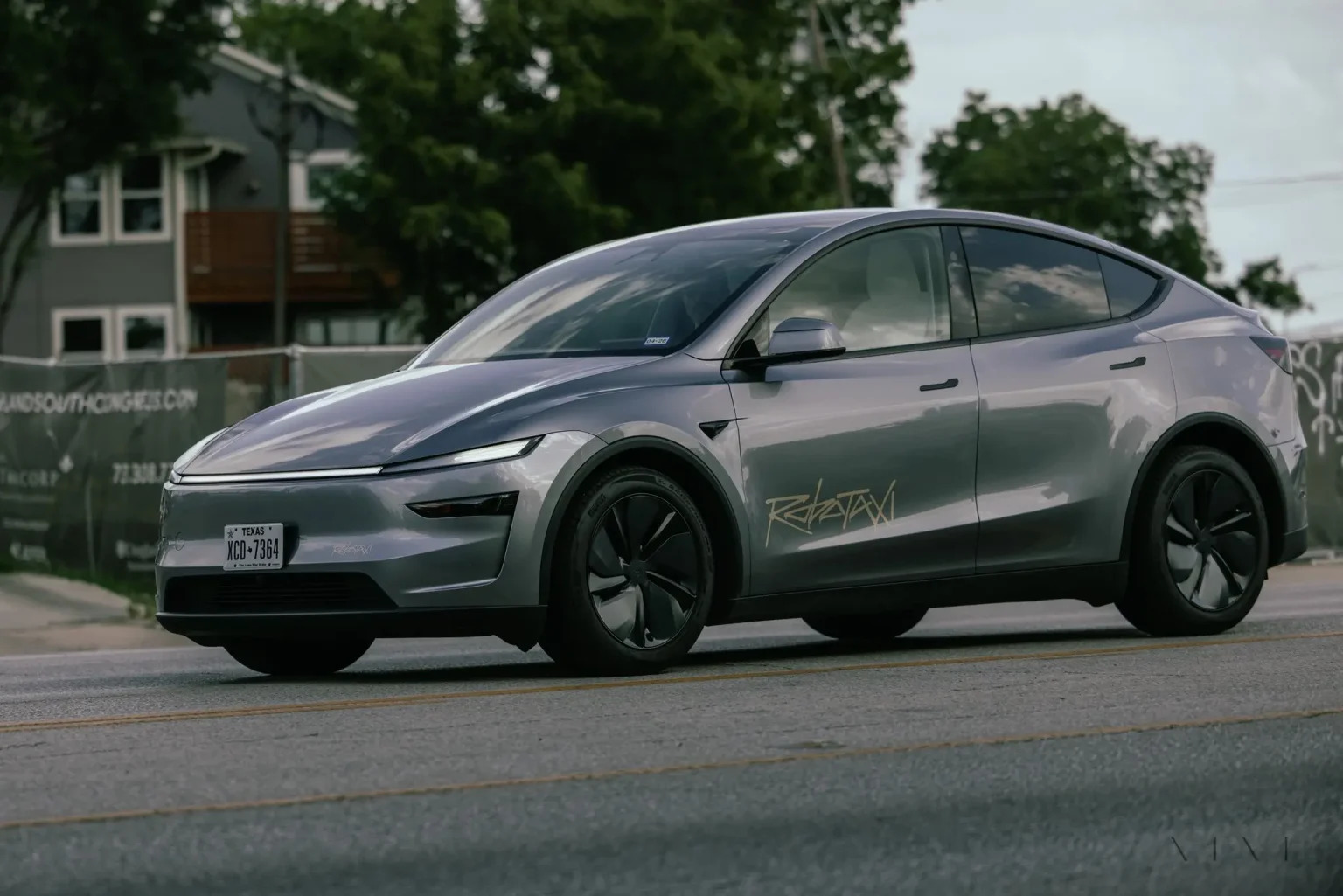
Tesla needs to come through on this one Robotaxi metric, Mark Delaney of Goldman Sachs says.
Tesla is in the process of rolling out its Robotaxi platform to areas outside of Austin and the California Bay Area. It has plans to launch in five additional cities, including Houston, Dallas, Miami, Las Vegas, and Phoenix.
However, the company’s expansion is not what the focus needs to be, according to Delaney. It’s the speed of deployment.
The analyst said:
“We think the key focus from here will be how fast Tesla can scale driverless operations (including if Tesla’s approach to software/hardware allows it to scale significantly faster than competitors, as the company has argued), and on profitability.”
Profitability will come as the Robotaxi fleet expands. Making that money will be dependent on when Tesla can initiate rides in more areas, giving more customers access to the program.
There are some additional things that the company needs to make happen ahead of the major Robotaxi expansion, one of those things is launching driverless rides in Austin, the first city in which it launched the program.
This week, Tesla started testing driverless Robotaxi rides in Austin, as two different Model Y units were spotted with no occupants, a huge step in the company’s plans for the ride-sharing platform.
Tesla Robotaxi goes driverless as Musk confirms Safety Monitor removal testing
CEO Elon Musk has been hoping to remove Safety Monitors from Robotaxis in Austin for several months, first mentioning the plan to have them out by the end of 2025 in September. He confirmed on Sunday that Tesla had officially removed vehicle occupants and started testing truly unsupervised rides.
Although Safety Monitors in Austin have been sitting in the passenger’s seat, they have still had the ability to override things in case of an emergency. After all, the ultimate goal was safety and avoiding any accidents or injuries.
Goldman Sachs reiterated its ‘Neutral’ rating and its $400 price target. Delaney said, “Tesla is making progress with its autonomous technology,” and recent developments make it evident that this is true.
Investor's Corner
Tesla gets bold Robotaxi prediction from Wall Street firm
Last week, Andrew Percoco took over Tesla analysis for Morgan Stanley from Adam Jonas, who covered the stock for years. Percoco seems to be less optimistic and bullish on Tesla shares, while still being fair and balanced in his analysis.
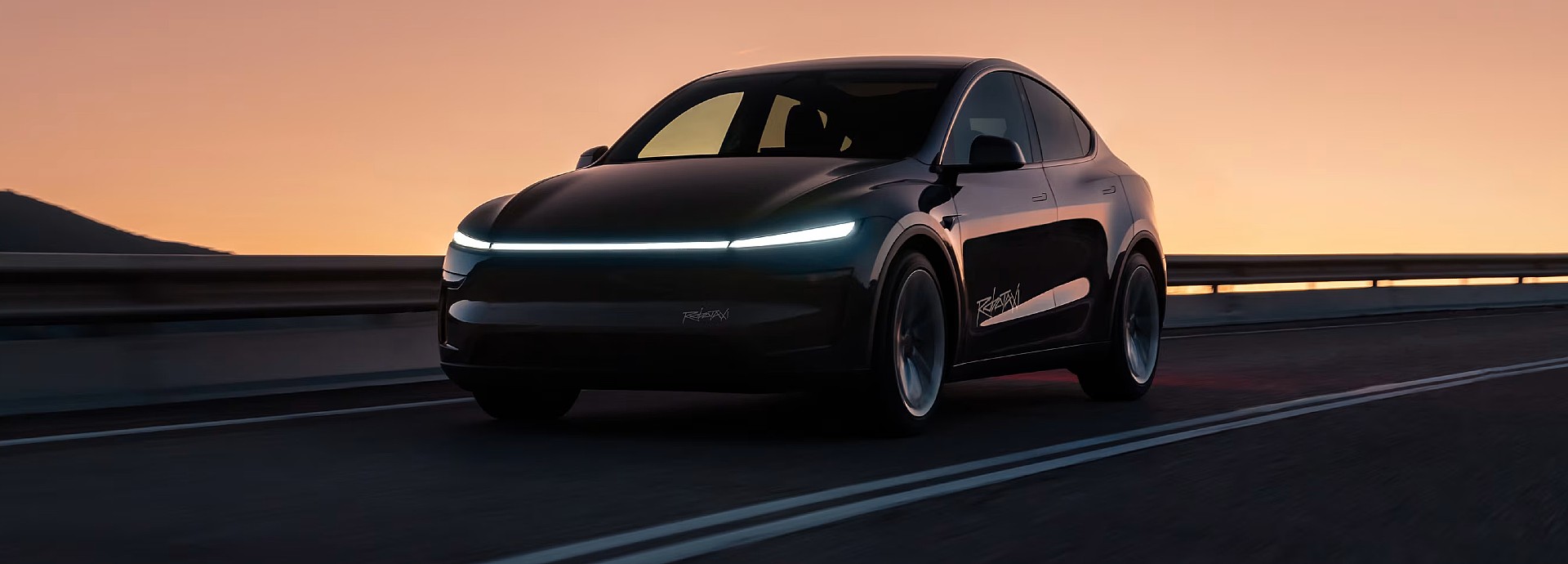
Tesla (NASDAQ: TSLA) received a bold Robotaxi prediction from Morgan Stanley, which anticipates a dramatic increase in the size of the company’s autonomous ride-hailing suite in the coming years.
Last week, Andrew Percoco took over Tesla analysis for Morgan Stanley from Adam Jonas, who covered the stock for years. Percoco seems to be less optimistic and bullish on Tesla shares, while still being fair and balanced in his analysis.
Percoco dug into the Robotaxi fleet and its expansion in the coming years in his latest note, released on Tuesday. The firm expects Tesla to increase the Robotaxi fleet size to 1,000 vehicles in 2026. However, that’s small-scale compared to what they expect from Tesla in a decade.
Tesla expands Robotaxi app access once again, this time on a global scale
By 2035, Morgan Stanley believes there will be one million Robotaxis on the road across multiple cities, a major jump and a considerable fleet size. We assume this means the fleet of vehicles Tesla will operate internally, and not including passenger-owned vehicles that could be added through software updates.
He also listed three specific catalysts that investors should pay attention to, as these will represent the company being on track to achieve its Robotaxi dreams:
- Opening Robotaxi to the public without a Safety Monitor. Timing is unclear, but it appears that Tesla is getting closer by the day.
- Improvement in safety metrics without the Safety Monitor. Tesla’s ability to improve its safety metrics as it scales miles driven without the Safety Monitor is imperative as it looks to scale in new states and cities in 2026.
- Cybercab start of production, targeted for April 2026. Tesla’s Cybercab is a purpose-built vehicle (no steering wheel or pedals, only two seats) that is expected to be produced through its state-of-the-art unboxed manufacturing process, offering further cost reductions and thus accelerating adoption over time.
Robotaxi stands to be one of Tesla’s most significant revenue contributors, especially as the company plans to continue expanding its ride-hailing service across the world in the coming years.
Its current deployment strategy is controlled and conservative to avoid any drastic and potentially program-ruining incidents.
So far, the program, which is active in Austin and the California Bay Area, has been widely successful.
